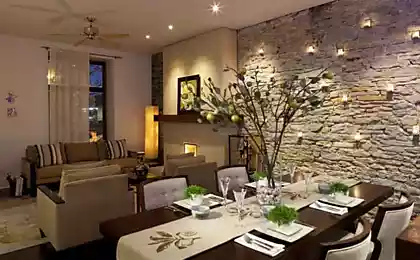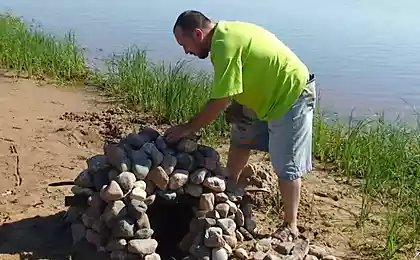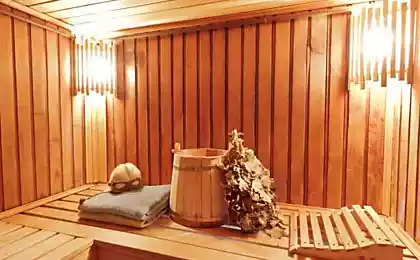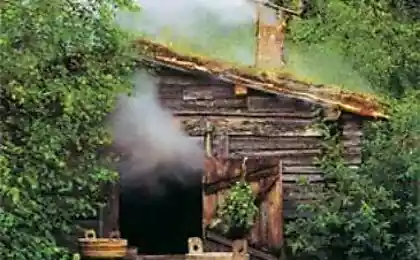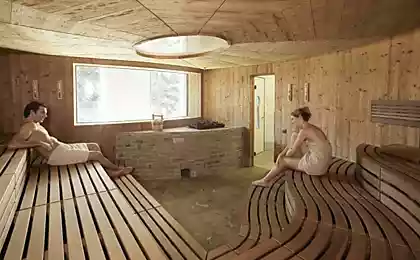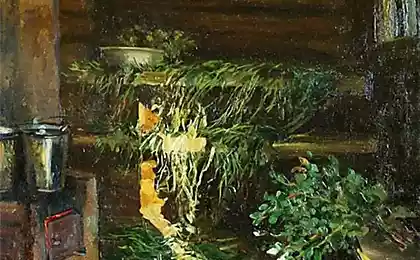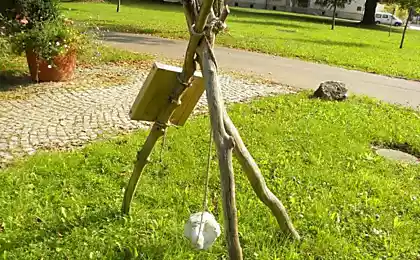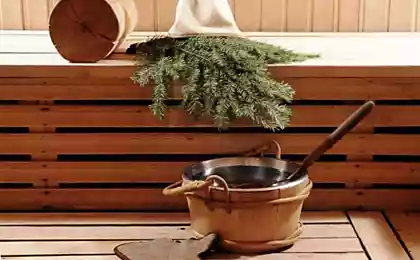604
For your for finishing baths: ideas for use
Stone the soapstone has long been known. In the old days it is most often used for the treatment of patients, today it is a modern building material.
By the way, in the time of Peter was established the industrial extraction of soapstone in the Republic of Karelia, so use it for construction purposes for many centuries. This mineral is not only the name of the soapstone, and it is called soap stone and the soapstone and Wen. In General, names at him a lot.
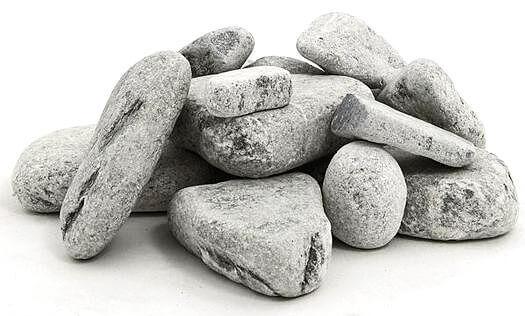
What distinguished this stone is why it is most often used in saunas and steam baths? Let's deal.
The characteristics of soapstoneto Begin with, which is a natural product of the categories of rocks metamorphic type. The soapstone consists of:
Features:
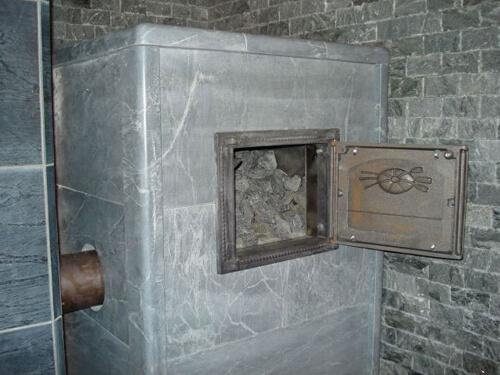
Attention! Kamenka, carved in stone, heats up quickly and gives off heat during the day. However, there is light steam. Scientists have proven that its effects on the human body similar to sunlight.
It should be noted that the soapstone is not only used for finishing baths and saunas. Today it is used in the construction of blast furnaces, finishing dance floors (it perfectly dampens noise, and this is another positive feature), it is used as an additive in refractory materials, electrical insulation. Today, scientists suggest the use of soapstone in the decoration of premises with computers. The stone easily absorbs electromagnetic radiation, is harmful in large quantities to humans.
As for the question, are they harmful for your or not, you can answer that. Scientists have found in its composition radionuclides and harmful substances, for example, asbestos, therefore, by all accounts, he is not dangerous to humans.
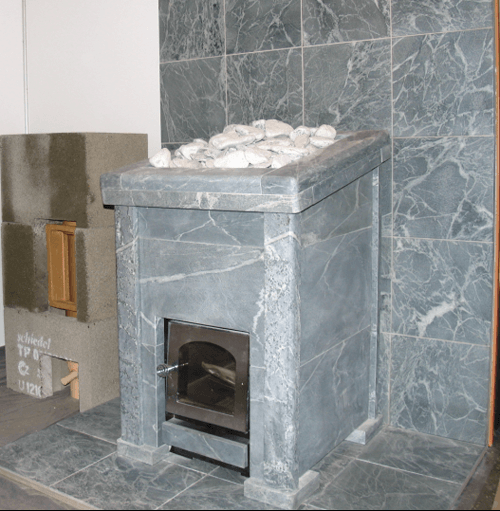
Again denote the positive characteristics of the soapstone.
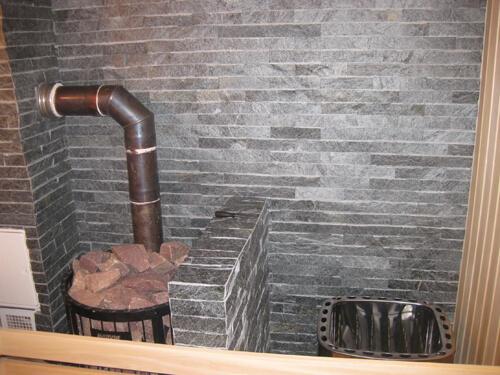
How to choose your
Dense and hard tiles without red touches.If you are faced with the task of choosing the stone for the finishing baths or saunas, you will have to pay attention to such indicators.
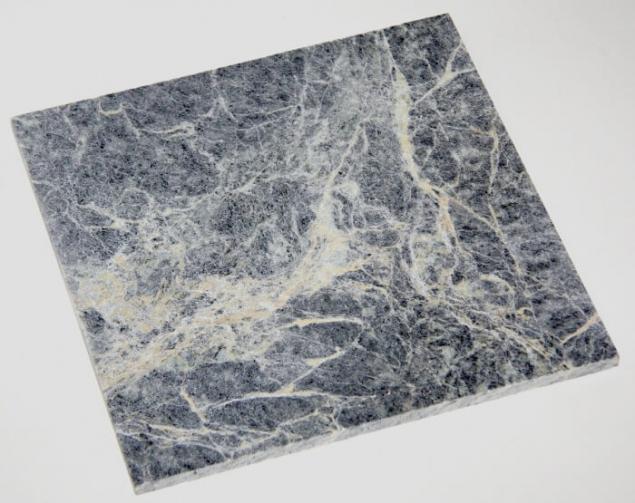
The use of tiles of soapstoneBefore to flood the oven, lined with soapstone, the surface finishing rinse water, using a stiff brush. Then well to heat the oven. Pour water to the stone facing, not fearing that it will crack. The soapstone will absorb some of the water, and will gradually give in the bath room easy even steam.
Experts recommend the use of horizontal cladding the interior surfaces of the furnace, and vertical external planes. Thus, rapid heating of the furnace and its slow cooling.
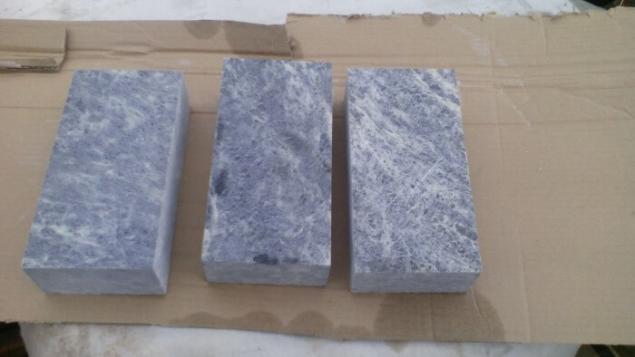
Other stones for finishing baths and saunas, There are two stone, which today is used in finishing processes in the baths and saunas. This is jadeite and quartzite.
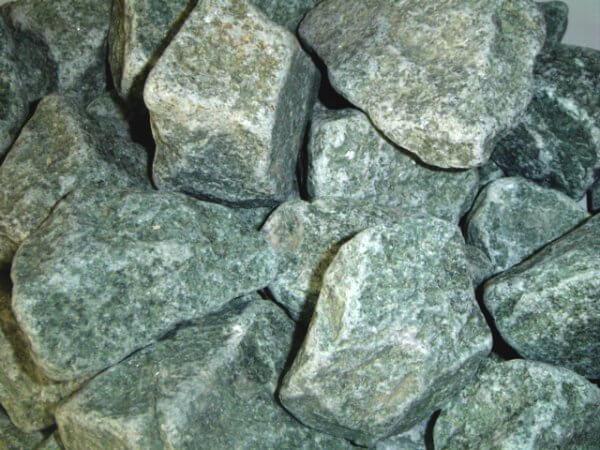
Jadeite is a gemstone with such a nice greenish color that resembles malachite. But it is several times stronger than the second, so that it is valued higher. Basically jade is mined in China and Kazakhstan. In Russia, in small quantities it is found in the Urals.
Its strength and noble color were the reason for lining the furnaces in the baths and saunas. Most importantly, the lining jadeite is a long – term operation of the furnaces. There are several classes of this stone depending on the color green shades. Sauna and steam bath is usually finished by class – Utility.
Not to compare jade with other stones for finishing baths and saunas, outset that this is the best option that you can recommend to those who decides what stone to choose for the finishing baths or saunas. Although it is the most expensive.

Quartzite has the same origin as the jadeite, and soapstone. He has one feature that distinguishes rock from other types of cladding. If splash on a heated quartzite of cold water, then he will together with the steam to stand out the so-called atomic oxygen, that is ozone. Remember how he smells after a rain. The same smell you will smell in the bath.
The gas saturates the blood with oxygen, improves health immediately, aktiviziruyutsya brain activity. The quartzite begins to radiate electromagnetic waves. By the way, this physical effect is called piezoelectric effect.
The most popular quartzite is a white (often called "hot ice") and crimson. By the way, white quartzite quickly fails. Temperature changes negatively affect its structure. Crimson quartzite in this respect more sustainable. By the way, both options are often used not for decoration, but as diked stone for filling of the heater.
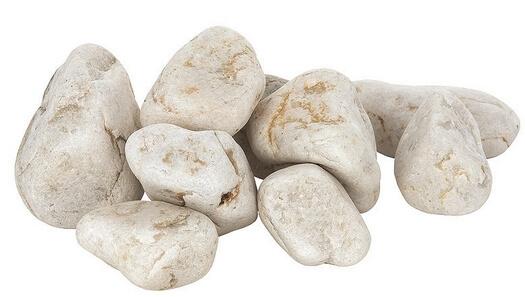
Conclusion so, here are three natural stone: soapstone, jadeite and quartzite. Which one to choose for the finishing baths or saunas? It is not necessary to put the question this way because each stone has their own characteristics, its properties, and its price. So you have to choose according to these three criteria.
published
P. S. And remember, only by changing their consumption — together we change the world! ©
Source: bouw.ru/article/primenenie-talykohlorita
By the way, in the time of Peter was established the industrial extraction of soapstone in the Republic of Karelia, so use it for construction purposes for many centuries. This mineral is not only the name of the soapstone, and it is called soap stone and the soapstone and Wen. In General, names at him a lot.

What distinguished this stone is why it is most often used in saunas and steam baths? Let's deal.
The characteristics of soapstoneto Begin with, which is a natural product of the categories of rocks metamorphic type. The soapstone consists of:
- 40-50% talc.
- 40-50% of magnesite.
- 5-8% — chlorite.
Features:
- High strength due to the content of magnesite.
- Good viscosity.
- Easily processed, it does not crumble.
- The density of the material 2700-3200 kg/m3. Heavy enough stone.
- High heat capacity (0,98 kJ/kg K). If we compare this figure with materials such as fireclay brick and jadeite, it is almost two times higher. For example, if you place a tile from talkohlorita in boiling water, it will heat up in five minutes, but the cool down will be within the hour.
- Almost zero water absorption.
- A fairly wide range of color shades.
- The fact is that heating the stone highlights the vitamin "D". This vitamin is used to strengthen bones in adults and also is a preventive agent in the treatment of rickets in children.
- Your reduces blood pressure, plus strengthens the immune system of the body.
- With it increases brain activity, concentration becomes high, the same applies to care.
- Good job ARI and ARI.
- Gentle heat from a soap stone, can cope with diseases such as sciatica and degenerative disc disease.
- Many believe that the soapstone – stone men. That is why it is recommended to use in baths, where bathing men. He fills their male energy Yang.
- Scientists have proven that by installing tile in your bath or sauna, you get radiated a soft origin. It relaxes the.

Attention! Kamenka, carved in stone, heats up quickly and gives off heat during the day. However, there is light steam. Scientists have proven that its effects on the human body similar to sunlight.
It should be noted that the soapstone is not only used for finishing baths and saunas. Today it is used in the construction of blast furnaces, finishing dance floors (it perfectly dampens noise, and this is another positive feature), it is used as an additive in refractory materials, electrical insulation. Today, scientists suggest the use of soapstone in the decoration of premises with computers. The stone easily absorbs electromagnetic radiation, is harmful in large quantities to humans.
As for the question, are they harmful for your or not, you can answer that. Scientists have found in its composition radionuclides and harmful substances, for example, asbestos, therefore, by all accounts, he is not dangerous to humans.

Again denote the positive characteristics of the soapstone.
- Its porous structure provides ease in handling stone.
- For the same reason it is a good insulator.
- Heats up quickly and cools down slowly, which for baths and saunas the main indicator.
- From him comes light steam, maximum oxygenated.
- The strength of the stone ensures its maximum nagruzhennosti.
- Copes with a variety of negative external loads.
- Absolute environmental friendliness in mind no harmful substances.
- When exposed to high temperatures and will not crack or change color.
- Today are increasingly found the lining of the furnaces of the baths and saunas it with soapstone. It is a kind of protective barrier which reduces the corrosion processes.

How to choose your
Dense and hard tiles without red touches.If you are faced with the task of choosing the stone for the finishing baths or saunas, you will have to pay attention to such indicators.
- Tiles should not leave in the hands of the mud.
- It should not crumble under heavy pressure of the fingers.
- Pay attention to the pores, they should be small and round.

The use of tiles of soapstoneBefore to flood the oven, lined with soapstone, the surface finishing rinse water, using a stiff brush. Then well to heat the oven. Pour water to the stone facing, not fearing that it will crack. The soapstone will absorb some of the water, and will gradually give in the bath room easy even steam.
Experts recommend the use of horizontal cladding the interior surfaces of the furnace, and vertical external planes. Thus, rapid heating of the furnace and its slow cooling.

Other stones for finishing baths and saunas, There are two stone, which today is used in finishing processes in the baths and saunas. This is jadeite and quartzite.

Jadeite is a gemstone with such a nice greenish color that resembles malachite. But it is several times stronger than the second, so that it is valued higher. Basically jade is mined in China and Kazakhstan. In Russia, in small quantities it is found in the Urals.
Its strength and noble color were the reason for lining the furnaces in the baths and saunas. Most importantly, the lining jadeite is a long – term operation of the furnaces. There are several classes of this stone depending on the color green shades. Sauna and steam bath is usually finished by class – Utility.
Not to compare jade with other stones for finishing baths and saunas, outset that this is the best option that you can recommend to those who decides what stone to choose for the finishing baths or saunas. Although it is the most expensive.

Quartzite has the same origin as the jadeite, and soapstone. He has one feature that distinguishes rock from other types of cladding. If splash on a heated quartzite of cold water, then he will together with the steam to stand out the so-called atomic oxygen, that is ozone. Remember how he smells after a rain. The same smell you will smell in the bath.
The gas saturates the blood with oxygen, improves health immediately, aktiviziruyutsya brain activity. The quartzite begins to radiate electromagnetic waves. By the way, this physical effect is called piezoelectric effect.
The most popular quartzite is a white (often called "hot ice") and crimson. By the way, white quartzite quickly fails. Temperature changes negatively affect its structure. Crimson quartzite in this respect more sustainable. By the way, both options are often used not for decoration, but as diked stone for filling of the heater.

Conclusion so, here are three natural stone: soapstone, jadeite and quartzite. Which one to choose for the finishing baths or saunas? It is not necessary to put the question this way because each stone has their own characteristics, its properties, and its price. So you have to choose according to these three criteria.
published
P. S. And remember, only by changing their consumption — together we change the world! ©
Source: bouw.ru/article/primenenie-talykohlorita

